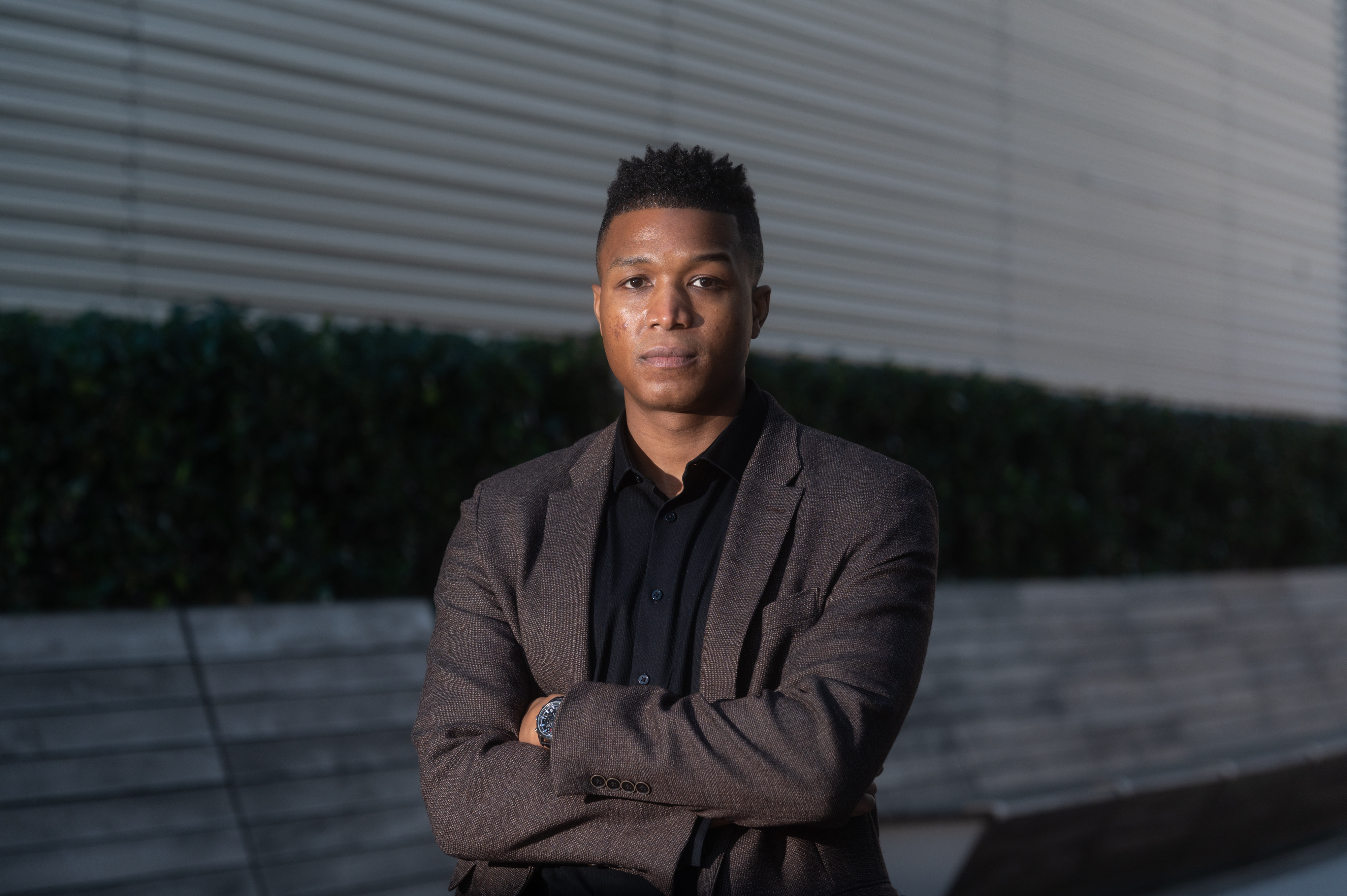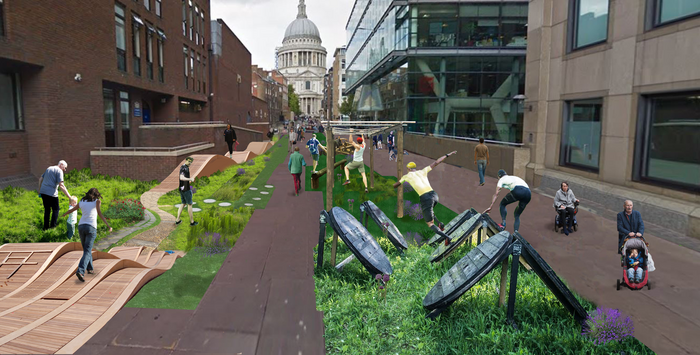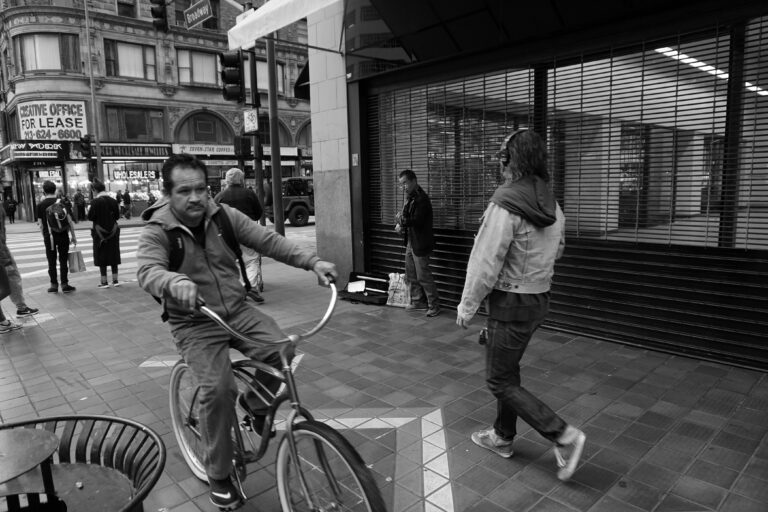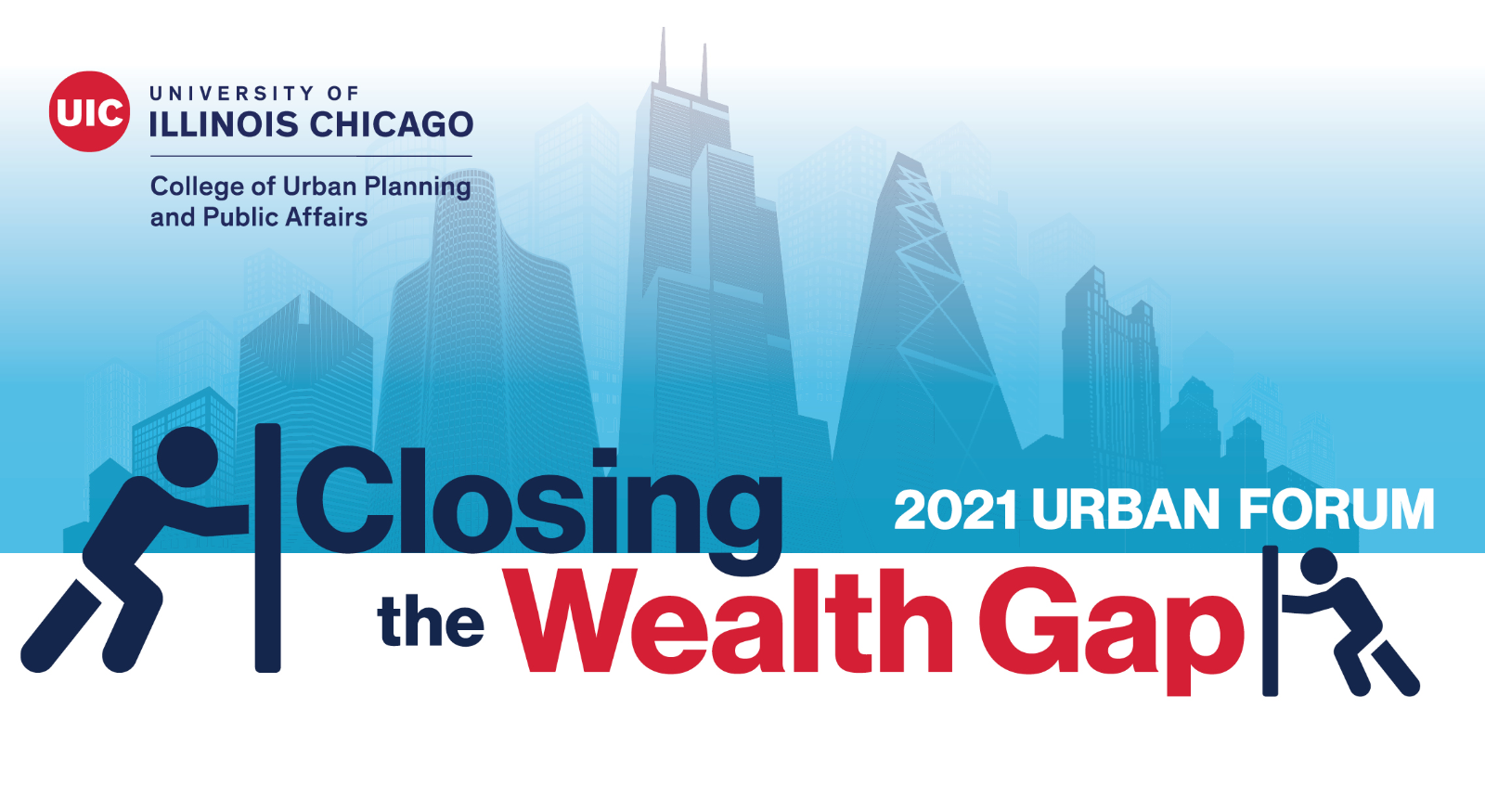Researchers have developed the Interactive Relation Embedding Network (IRE-Net), an AI system that can detect contactless human interactions in crowded settings, enhancing tools for public safety and social behavior analysis.
Tag: Urban Planning
Unveiling East Asia’s urban landscape: a massive mapping project illuminates 280 million buildings
A pioneering study has completed a detailed mapping of 280 million buildings in East Asia, a region grappling with urbanization challenges. This mapping, the most extensive to date, utilizes very high-resolution (VHR) imagery to create a precise and comprehensive dataset.
FAU Experts for the 2024 Hurricane Season
The 2024 Atlantic hurricane season begins on June 1, and forecasts indicate a highly active season. Several Florida Atlantic University faculty experts are available to discuss various issues surrounding hurricane preparedness, evacuation and aftermath.
FSU faculty available to comment for 2024 hurricane season
By: Bill Wellock | Published: May 16, 2024 | 3:36 pm | SHARE: The 2024 Atlantic hurricane season is approaching.The season runs from June 1 through November 30. This year’s forecast includes an above-average number of storms.Florida State University faculty are leaders in the study of hurricanes and ways to mitigate their destruction.
A Smarter City Skyline for Flood Safety
With climate change and rising urbanization, the likelihood and severity of urban flooding are increasing. But not all city blocks are created equal. In Physics of Fluids, an AIP Publishing journal, researchers investigated how urban layout and building structures contribute to pedestrian safety during flooding.

Urban Planning Expert Shares Thoughts on Baltimore Bridge Collapse
ALBANY, N.Y. (March 26, 2024) — A major bridge in Baltimore partially collapsed early Tuesday morning after it was hit by a container ship, sending several vehicles plunging into the water below and prompting a massive search and rescue effort. The…
Research Identifies Characteristics of Cities That Would Support Young People’s Mental Health
As cities around the world continue to draw young people for work, education, and social opportunities, a new study identifies characteristics that would support young urban dwellers’ mental health.
UIC Urban Forum to consider Chicago’s next 50 years
University of Illinois Chicago event examines Chicago’s next 50 years and how to face the most pressing problems in planning, economics, climate and neighborhoods.
Policies for happiness: Finnish experts available to comment on what keeps the population happy
Experts from Finland available to comment on policies that create happiness
China’s Urban Jungles: How City Parks are Winning the Battle Against Concrete
Recent studies highlight a significant transformation in China’s urban landscape, where the greening of city cores is compensating for vegetation loss in expanding urban areas.
Urban heat: Research may point the way to cooling steamy cities
New research from Binghamton University, State University of New York might point the way to cooling steamy cities. A Binghamton professor has received a grant for his work pertaining to the urban heat island effect in cities.
Park less, walk more
A new study shows how delivery companies can save time and money by designing drop-off and pick-up routes that require their drivers walk more to reduce the amount of time they spend driving around congested urban streets looking for a place to park.
Innovative urban living concept tackles housing woes and offers socially connected solutions
Co-locating homes on single suburban allotments to create smaller and more socially connected living options could help address the nation’s housing crisis, according to a University of South Australia researcher.
Fungal-rich soil may improve green roofs
Green roofs have become increasingly popular thanks to their benefits related to climate adaptation, mitigation, and urban biodiversity management.
New Model Adds Human Reactions to Flood Risk Assessment
Researchers at North Carolina State University have created a land change model that simulates interactions between urban growth, increased flooding and how humans adapt in response. The new model could offer a more realistic assessment of risk for urban planners, natural resource managers and other local government stakeholders.
Improved wind speed forecasts can help urban power generation, according to new Concordia research
Navid Shirzadi uses deep learning models that hybridize existing forecasting models
AI can alert urban planners and policymakers to cities’ decay
As urbanization advances around the globe, the quality of the urban physical environment will become increasingly critical to human well-being and to sustainable development initiatives. However, measuring and tracking the quality of an urban environment, its evolution and its spatial disparities is difficult due to the amount of on-the-ground data needed to capture these patterns. To address this issue, Yong Suk Lee, assistant professor of technology, economy and global affairs in the Keough School of Global Affairs at the University of Notre Dame, and Andrea Vallebueno from Stanford University used machine learning to develop a scalable method to measure urban decay.
Unlocking urban diversity: The magnetism of complex amenities
Diversity fuels prosperity in cities, but where do people from diverse backgrounds meet? A study from the Complexity Science Hub now indicates that locations offering a range of rare shops and services may hold the key.
‘Coastal Squeeze:’ Massive Loss of U.S. Coastline Tidal Flats Over 31 Years
The entire contiguous U.S. has experienced massive urban expansions and the Atlantic Coast shows outstandingly high rates. Urban expansion has substantially squeezed the space of tidal flats and affected surrounding environments. In new urban areas, tidal flats have undergone considerable degeneration with more significant patterns as they get closer to new urban locations. Tidal flats protect against the ocean’s destructive powers such as hurricanes. Without some inland spaces to move around, they will likely disappear, which will have dire consequences for beachfront communities.

Cities need plans for extreme heat, says expert, as heat waves stretch across the globe
Extreme heat is now plaguing parts of the U.S., Europe, and Asia. A Virginia Tech expert explains what is making this one of the hottest summers on record.
The ground is deforming, and buildings aren’t ready
There is a “silent hazard” lurking underneath our major global cities, and our buildings were not designed to handle it.
FAU Experts for the 2023 Hurricane Season
With the 2023 Atlantic hurricane season officially starting on June 1 and ending Nov. 30, several Florida Atlantic University faculty experts are available to discuss various issues surrounding hurricane preparedness, evacuation and aftermath.
Experts from Finland available to comment on policies that create happiness
In anticipation of the 2023 World Happiness Report, experts from Aalto University in Finland are available to comment on what happiness means in this context and how this small country ensures its residents’ well-being. Finland has topped this subjective well-being…
To promote exercise, planners must look beyond cities
To encourage more active lifestyles, public health agencies recommend mixed-use neighborhoods and “complete” streets that are friendlier to walkers and bikers, but new Cornell University research finds that while those strategies increase physical activity, an urban bias limits their applicability in many parts of the country.
Over 4% of summer mortality in European cities is attributable to urban heat islands
Over four percent of deaths in cities during the summer months are due to urban heat islands, and one third of these deaths could be prevented by reaching a tree cover of 30%, according to a modelling study published in The Lancet and led by the Barcelona Institute for Global Health (ISGlobal), an institution supported by “la Caixa” Foundation.

Researchers Find that to Achieve Long-term Sustainability, Urban Systems Must Tackle Social Justice and Equity
An international coalition of researchers — led by Georgia Tech — have determined that advancements and innovations in urban research and design must incorporate serious analysis and collaborations with scientists, public policy experts, local leaders, and citizens.
Connecting the Dots Between Car Crashes and Systemic Transportation Challenges
To most of us, the twisted metal and broken glass of a car crash is evidence of driver error, bad luck or both. To Kelcie Ralph, an associate professor of urban planning and policy development at Rutgers, every car crash is a datapoint in the larger story of America’s poorly designed roads.

Pedestrians choose healthy obstacles over boring pavements, study finds
Up to 78% of walkers would take a more challenging route featuring obstacles such as balancing beams, steppingstones and high steps, research has found.
To be equitable, US urban green infrastructure planning must transform
Across the US, cities have embraced green infrastructure as a way to mitigate flooding, excessive heat, extreme weather, and other urban hazards.
First global survey of mayors shows urgent climate, infrastructure, equity challenges
A new global survey of city leaders underscores pressing challenges facing municipalities, including rising inequality, extreme heat and flood risks exacerbated by climate change, and a need to rebalance transportation systems that overly favor private automobiles.
Climate deal promotes ‘car-centric’ system, falls short on transit
As senators gear up to vote on a long-anticipated climate, tax and energy bill as soon as this week, electric vehicles are poised for a boost. One of the landmark provisions in the package is an extension and expansion of…
‘Urban Canyons’ Prolong Sonic Booms in Cities
Recent efforts have sought to make low-boom supersonic aircraft, but noise issues due to sonic booms may become more pronounced in cities, where buildings form canyons that distort the booms. In The Journal of the Acoustical Society of America, researchers conducted simulations comparing how sonic booms reflect differently over a single building, two neighboring buildings, and multiple buildings spaced at regular intervals. The researchers found the wider the streets compared to the height of buildings, the less booms are affected. Narrower streets introduced more complex boom propagation.
How Buildings Contribute to Urban Heating during Heat Waves
Previous research has found that heat waves and urban heat island effects reinforce each other’s effects. New research developed a method for modeling urban building energy demand and associated heat dispersal during heat waves.
How Can Changes to Urban Neighborhoods and Buildings Affect Microclimates and Energy Use?
Heating and cooling for buildings accounted for the United States’ biggest share (41 percent) of energy consumption in 2010, and energy use by buildings amounts to 40 percent of total U.S. carbon dioxide emissions. A new method allows researchers to test the design of neighborhoods and buildings to understand how they affect local and regional weather and energy use.
15-minute city within reach for Vancouver
The idea of a 15-minute city – one where everyone’s essential needs can be met within walking distance – is within reach for Vancouver, but more needs to be done to provide access in neighbourhoods with higher proportions of children, older adults, and racialized populations.
Howard County, Johns Hopkins APL Join Forces to Leverage Smart City Innovation in Gateway District
APL is bringing its expertise in public health, artificial intelligence, autonomous systems and climate change into a collaboration with the Howard County Economic Development Authority to incorporate smart and connected community concepts within the county’s Gateway District.
Wooden buildings are a sustainable alternative in the face of global steel shortages
The war in Ukraine and the resulting European sanctions on Russia have dramatically affected energy and commodity prices. The combination of supply uncertainty, expensive energy, and rising material costs has added urgency to the already critical need to embrace sustainable,…
National Zoning Atlas to demystify America’s patchwork of codes
Cornell University’s Legal Constructs Lab has announced the launch of a National Zoning Atlas, which will enable people to better understand zoning codes and the regulatory constraints embedded in them.
Urban planning experts aid first US city decarbonizing all buildings
The city of Ithaca, N.Y., is moving ahead with an ambitious plan to decarbonize and electrify all buildings — part of an effort to be carbon neutral by 2030. It’s the first project of its kind in the nation, and…
Long commutes, household crowding tied to COVID transmission
Long commute times and household crowding may be good predictors for a higher number of transmissible coronavirus cases in metropolitan settings, according to Cornell urban planning, architectural and public health researchers, in a study published in the journal Buildings and Cities.
Story tips: Getting to the root, empowering savings potential and hotter urban hydrology
ORNL story tips: Getting to the root, empowering savings potential and hotter urban hydrology
How cities can transform urban green spaces into carbon sinks – Expert available to comment on lessons learned from Helsinki pilot
Senior lecturer Mikko Jalas is available to comment on how cities can use biochar in urban green spaces to help reach carbon neutrality. Jalas has co-led efforts on Carbon Lane, a project to build and monitor an urban carbon sink…
Census shows city growth trends that could threaten climate efforts
New 2020 census data released on Thursday shows that nearly all the nation’s growth was in cities. Population growth in urban environments can signal an important trend in fostering sustainable, dense communities, but only if that growth occurs in the…
Poor and Minority Communities Suffer More from Extreme Heat in U.S. Cities
Low-income neighborhoods and communities with higher Black, Hispanic and Asian populations experience significantly more urban heat than wealthier and predominantly white neighborhoods within a vast majority of populous U.S. counties, according new research from the University of California San Diego’s School of Global Policy and Strategy.

What’s next: The ongoing urban exodus
Many employees have come to prefer working from home after being forced to do so more than a year ago when the pandemic started. By some estimates, at least one-quarter of employees will still be working remotely multiple days a week at the end of 2021. For those whose jobs allow it, being untethered from the office might mean moving farther away from it – by a few miles or a few hundred.
Trees, plants and soil could help cities cut their carbon footprints — when used smartly
Carbon footprint declarations are used in construction to ease product selection for low carbon building, but these standards don’t yet exist for green elements like soil, bushes and plants. A new study led by Aalto University is the first to map out how green infrastructure can be a resource for cities on the path to carbon neutrality.
Megaprojects threaten water justice for local communities
Urban megaprojects tend to be the antithesis of good urban planning. They have a negative impact on local water systems, deprive local communities of water-related human rights, and their funders and sponsors have little accountability for their impact.

UIC Urban Forum to address wealth gap, equity concerns
New York Times best-selling author Heather McGhee to deliver keynote for virtual event April 14
Americans’ Responses to Covid-19 Stay-Home Orders Differed According to Population Density
Americans strongly reduced their visits to grocery stores, pharmacies, and transit stations following stay-at-home orders from mayors and governors earlier this year, but did not reduce their visits to parks and beaches.

The rise of ‘Zoom Towns’ in the rural west
COVID-19 has expedited a trend of migration into western gateway communities—remote workers are fleeing cities to ride out the pandemic. A new study using data from 2018 found that growing populations caused urgent planning pressures, and officials felt unprepared to respond to and prepare for problems associated with rapid growth.